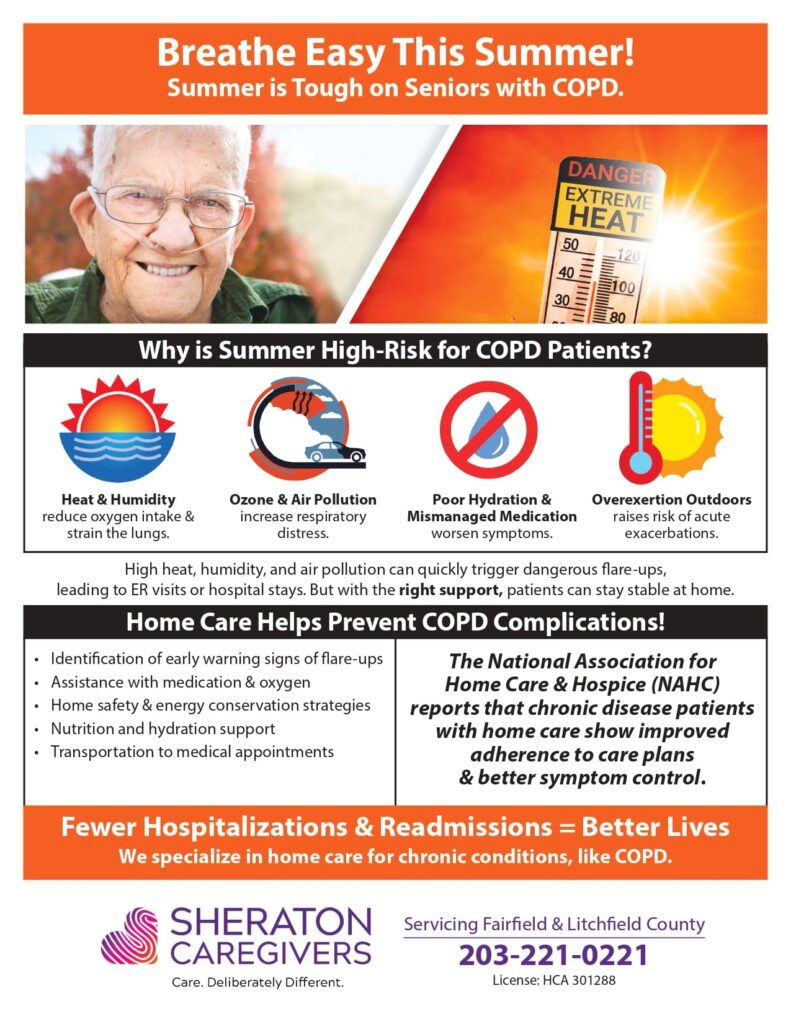TLDR
This article outlines essential COPD guidelines to help seniors manage symptoms during the challenging summer months. It defines COPD, explores the heightened summer risks, provides detailed guidelines for prevention and care, and discusses strategies for staying healthy at home, reducing the likelihood of hospital visits.
Summer may seem like the perfect time to relax outdoors, but for seniors living with chronic obstructive pulmonary disease (COPD), it brings unique challenges. Following COPD guidelines becomes especially critical, as heat, humidity, and increased air pollution can trigger dangerous flare-ups, resulting in emergency room visits or hospital stays.
Understanding COPD Guidelines
What Exactly are COPD Guidelines? COPD guidelines, such as those published by the Global Initiative for Chronic Obstructive Lung Disease (GOLD), are evidence-based recommendations aimed at managing COPD symptoms and minimizing health risks. They provide actionable strategies on medication management, lifestyle adjustments, and emergency response protocols.
Why Are COPD Guidelines Important in Summer? The American Lung Association highlights how summer conditions, including extreme temperatures and humidity, significantly exacerbate COPD symptoms. Poor air quality further compounds these risks, underscoring the necessity for clear guidelines to maintain respiratory stability.

Detailed COPD Guidelines for Summer Safety
Identifying and Managing High-Risk Conditions:
- Temperature Control: Stay indoors during peak heat hours, ideally between 11 a.m. and 4 p.m.
- Air Quality Monitoring: Regularly check air quality reports via AirNow.gov and stay indoors during days of high pollution.
- Humidity Management: Use air conditioners or dehumidifiers to keep indoor humidity below 50%.
Medication and Treatment Adherence:
- Consistently use prescribed inhalers and medications as directed by your healthcare provider.
- Maintain an emergency inhaler on hand at all times.
- Develop a personalized COPD Action Plan with your doctor to respond quickly to symptom changes.
Lifestyle and Environmental Adjustments:
- Stay hydrated to keep mucus thin and easier to clear.
- Wear lightweight clothing and stay in air-conditioned environments when outdoors.
- Avoid strenuous physical activities outdoors during high heat or poor air quality days.
Pros and Cons of COPD Management Strategies: Pros
- Reduced risk of hospitalization.
- Improved quality of life.
- Better management of daily symptoms.
Cons:
- Increased isolation during peak summer conditions.
- Cost and maintenance of air-conditioning or air quality management systems.
Practical Solutions to Common Challenges
- Combat isolation by maintaining indoor social connections or using virtual meeting platforms.
- Financial assistance programs for utility bills and cooling equipment are available through state and local agencies.
- Regular check-ins with healthcare providers help adjust treatment plans proactively.
Conclusion: Adhering to COPD guidelines is essential to safely navigate the challenging summer months. These guidelines provide seniors and caregivers with actionable strategies to prevent dangerous flare-ups triggered by heat, humidity, and air pollution. With thoughtful preparation and reliable support, like that offered by Sheraton Care, seniors living with COPD can confidently maintain stability and enjoy a healthier, more comfortable summer at home.

